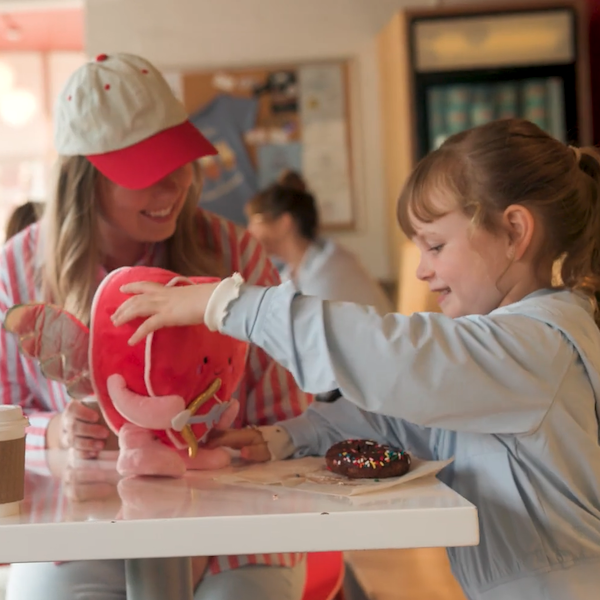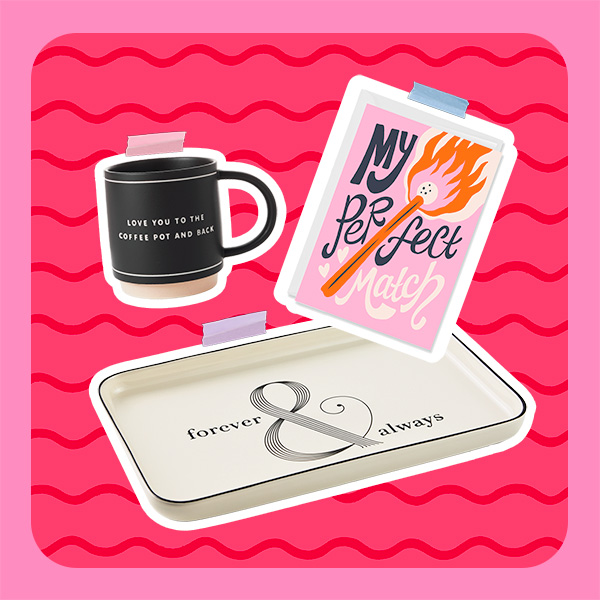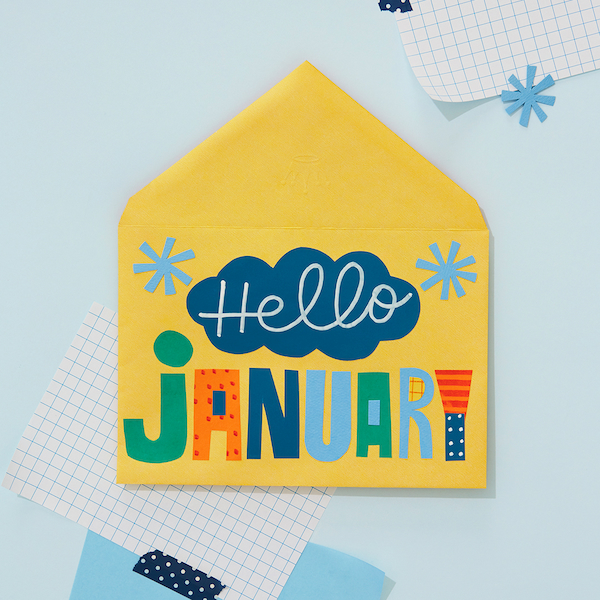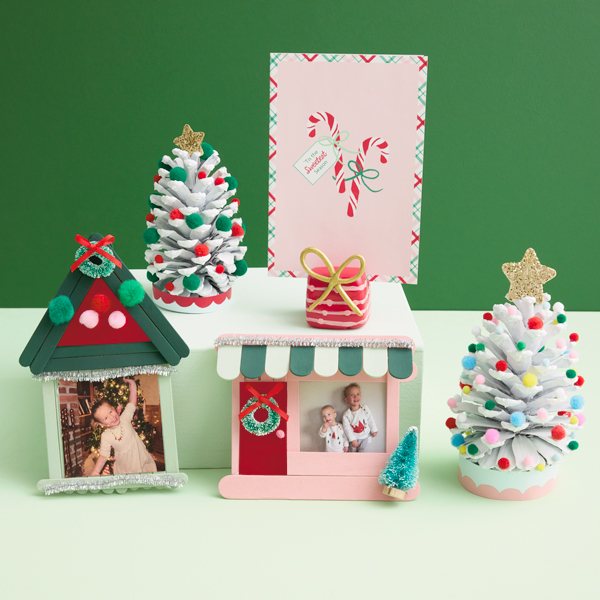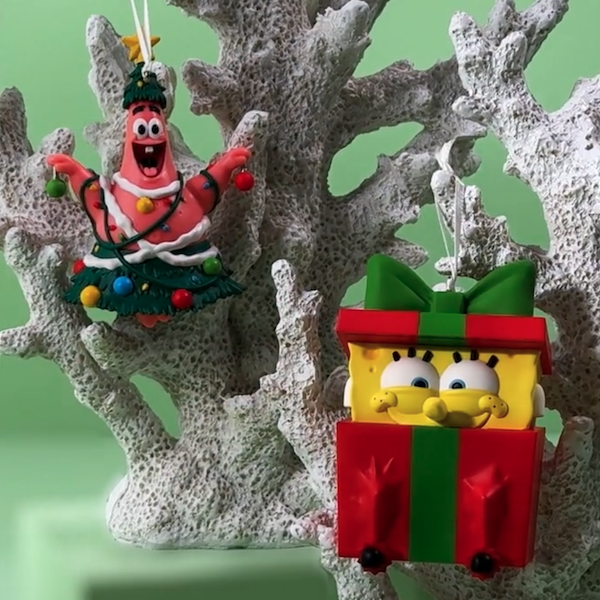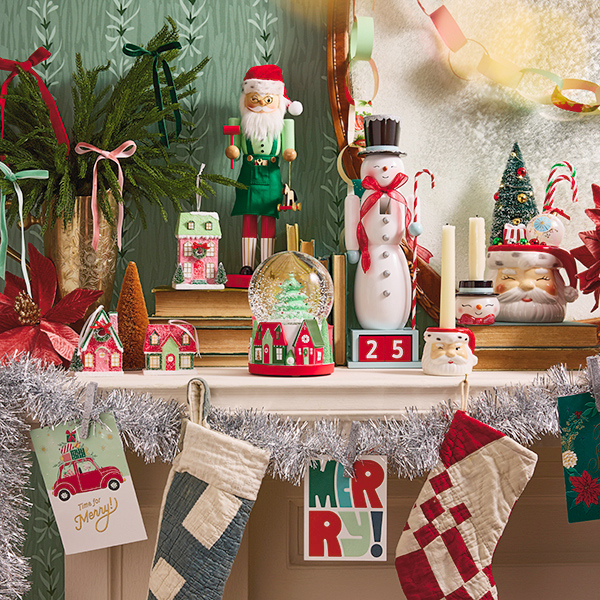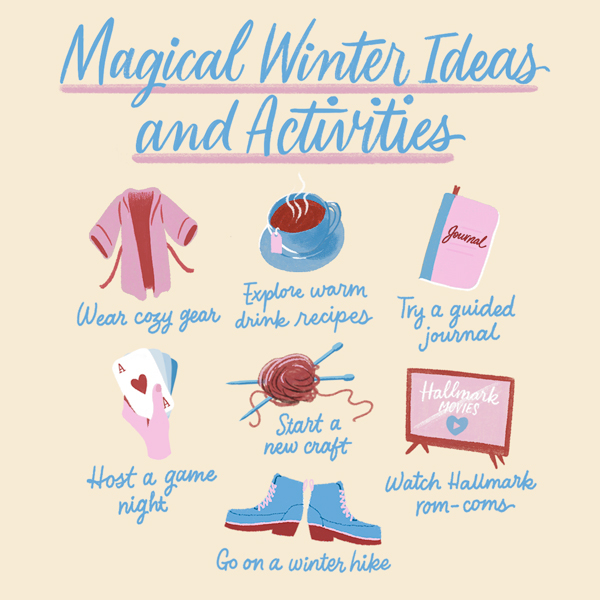Punch needle embroidery: Cute, cozy projects for cold nights
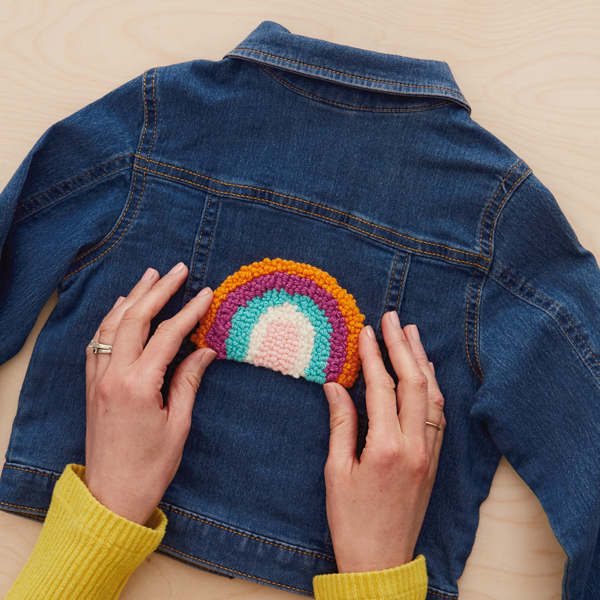
There’s something satisfying and deeply therapeutic about punch needle embroidery: It’s easy, repetitive and immediately gratifying. Plus, with a small project and simple design like the ones below, it only takes a few hours to end up with needle punch patches that are wearable, frameable or giftable.
We asked textile design expert Keda M. to teach us some needle punch basics. Follow along to create your own adorable, fuzzy needle punch patches to adorn jean jackets, tote bags and more.
Inspired? Create and share by tagging @HallmarkStores.
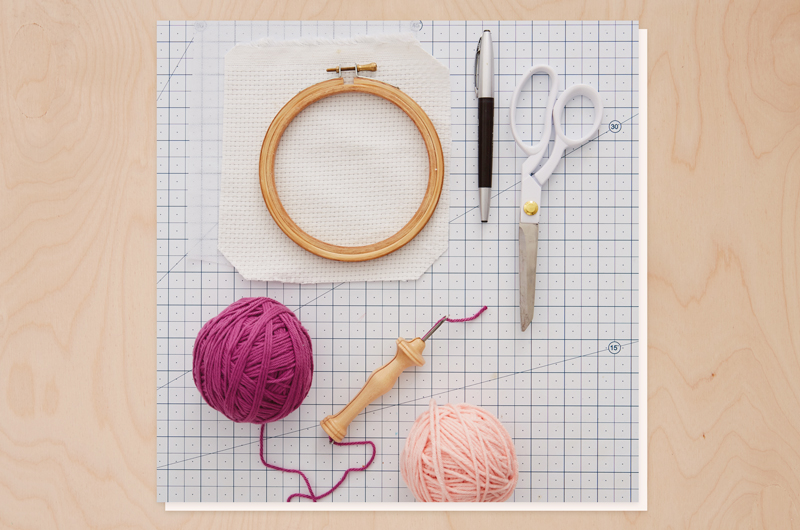
What you’ll need:
- Size 13 Oxford needle
- 5 ounces yarn in your desired colors
- Fabric scissors
- Embroidery hoop: You’ll want one bigger than your patch on all sides.
- Fabric marker or Sharpie
- Monk’s cloth: You can use many different materials for needle punching, but evenweave fabrics make it extra simple. Wash and dry your fabric before starting.
- Lightweight fusible interfacing: It makes the fabric easier to punch through and gives you a smooth surface to draw the pattern.
- Iron-on adhesive or fabric fuse sheets (if making patches)
If you do embroidery, cross stitch or needlepoint, you probably have most of these supplies handy. If not, they’re easy to find or order online and are usually inexpensive.
How to make needle punch patches
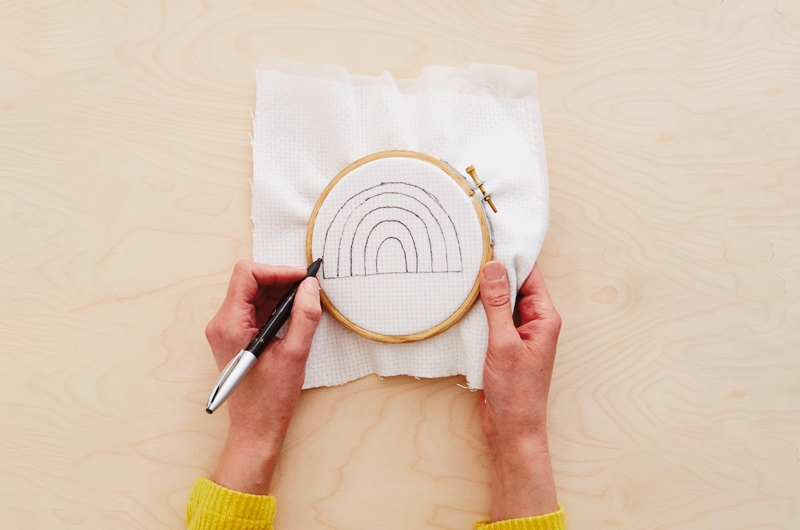
First, prep your fabric.
Following the instructions on your interfacing, iron it to your monk’s cloth.
Put the ironed fabric in your embroidery hoop with the design (which will be the back of your patch) on top, facing up. Make sure it’s pulled tight and even.
If you’re tracing your design, you can do it right onto the fusible interfacing. If you’re freehanding it, draw it after you’ve stretched the fabric in the embroidery hoop.
Important note: You’ll be needling through the back of the fabric—so the loops of yarn don’t get crushed—so remember your finished patch will be a reverse image.
Pro tip: If your design is too intricate, you might lose some detail. Keep it big and simple, especially when you’re starting out. We recommend art without lots of tiny details—iconic images like rainbows, flowers, coffee cups, etc.

Next, thread your needle.
Unlike sewing needles, Oxford needles are easy to thread. Starting at the bottom, thread your yarn through the metal loop, towards the slot in the handle. Pull it through the slot and through the eye of the needle.
Pro tip: Thicker yarn means you’ll need a bigger needle—and fabric with a more open weave. Keep that in mind when choosing yarn.

Then get to needle punching!
To start, hold about an inch-long tail of the yarn down with your thumb, and punch the needle through an opening in the weave of your fabric. You’ll want the slot on the needle facing the direction you’re moving.
Lift the needle back up through the fabric, slide it to the next opening and punch it through. Don’t let the tip of the punch needle come off the surface of the fabric as you move from one punch to the next.
The direction you move to fill in your design is up to you, based on the design and whether you’re right- or left-handed. You can outline and fill it in or go row by row—whatever helps you feel the flow.
To change colors, cut the yarn—leaving about a half-inch tail—and move on. There’s no need to knot or finish anything off.

Cut out your needle punch design.
Take your design out of the embroidery hoop and trim any straggly yarn.
Before you cut the cloth, follow the instructions to carefully adhere the iron-on adhesive or fabric fuse sheets to the back. Added benefit: It’ll secure your loops so they don’t pull out.
Don’t get too close to the needle punch loops when you’re cutting—you’ll need a little fabric around the edges to hold it all together.
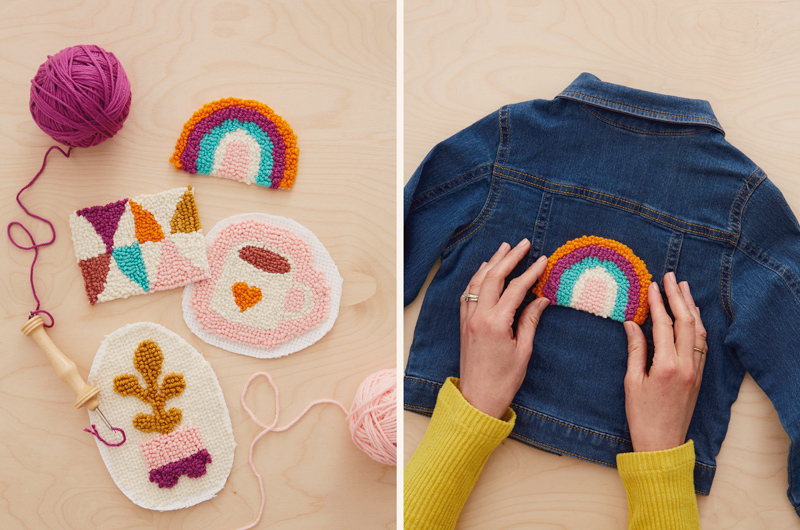
If creating an iron-on patch, peel the backing off the iron-on adhesive and iron it on to your jacket or bag.
If you’re heat-fusing it, apply the iron on the garment or tote side—not the yarn—so you don’t crush the beautiful loops you created. You can always pin the patch on before turning it over and ironing it to help secure it in place.
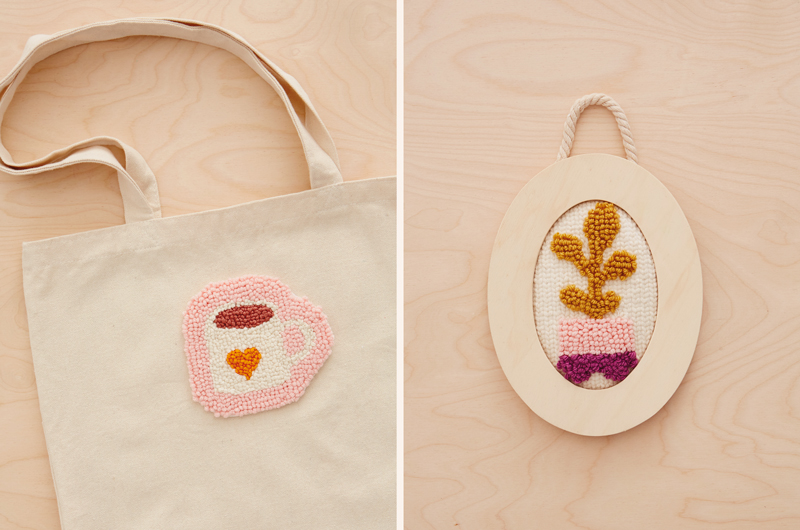
HOW. CUTE. IS. THIS. TOTE.
Also, if you’re framing your lovely creation, you don’t have to add the iron-on adhesive. But you probably figured that out!
With these tips, you’re one step closer to becoming a needle punch embroidery expert and the coolest gift-giver at any party. Personalized patches made with love? Yes, please!
Need more cool ideas to craft your heart out? Check out some of our faves:
Shop Craft Supplies
See allYou may also like
See more-
Valentine's Day Make little hearts happy this Valentine’s Day 💞
Nothing lights up a little one's face like letting them know just how much they're loved. Okay...except for when they...
-
Valentine's Day Valentine's Day gifts for him: 100+ ideas for the boyfriends, husbands, dads and sons in your life
Who’s ready for Valentine’s Day?! 🥰 We absolutely love this holiday and can’t think of a more perfect time to shower ...
-
Calendar Flip Spring Forward: March 2026 Holidays and Observances
Color us excited! From the wearin’ of the green and more sunny fun to colorful Holi festivals and celebrating crayons...
-
Calendar Flip Welcome a New Year: January 2026 Holidays and Observances
HAPPY NEW YEAR! If that hurt your head, you might have celebrated a little too much. When you’re feeling better, we h...
-
Calendar Flip Hello, Love: February 2026 Holidays and Observances
Let’s warm up this cold month with love and connections. From valentine cards to dressing up your pet, this month has...
-
Christmas Christmas gift wrap ideas to match your holiday personality
If you’re anything like me, the holiday season can make you tap into different sides of yourself. Maybe you become th...
-
Gifting 60+ Peanuts® Snoopy gifts to help fans channel their favorite beagle
It was a dark and stormy night in the winter of 2015. I was 17 years old, overwhelmed with AP classes, senior-year st...
-
Christmas 3 Christmas kids craft ideas, plus activities for even more easy holiday fun
From decorating the house to baking cookies, the Christmas season gives us so many opportunities to get creative and ...
-
Christmas The best Christmas gift idea: Bikini Bottom BFFs
Got a bestie who's as silly as you? Or one who's there through all of life's storms with a smile? Then we think this ...
-
Christmas Which Disney Pixar character is your favorite? 🤔
Thankfully, with so many beloved Disney Pixar character Keepsake Ornaments, you won't have to choose a favorite this ...
-
Christmas Not having Cher on your tree? As if! 💅
If you're a Millennial, we predict you will be majorly, totally, butt crazy in love with this Clueless Keepsake Ornam...
-
Christmas 20 vintage Christmas ideas to turn up the charm this holiday season
When I think of my perfect Christmas, vintage vibes are always what come to mind first. Santa’s sleigh in a dreamy wi...
-
Christmas 20+ ideas to help you plan your trip to the Hallmark Christmas Experience
Ever wanted to step inside of a picture-perfect Hallmark Christmas movie? Or travel to a place where you could immers...
-
Christmas Sit fireside with the cutest snowfolks around!
A campfire might seem like the least likely place to find a few snowmen hanging out, but if it's cold enough, even th...
-
Christmas With so much magic, we can’t choose a favorite!
Every Keepsake Ornament is magical, but our ornaments with light, sound and music are in a class all their own. From ...
-
Christmas Stocking stuffer ideas for literally everyone on your list
The stocking stuffer struggle is real. By the time you’ve bought your main presents, you feel like you’re all out of ...
-
Christmas You love Keepsake Ornaments…we love rewarding you! 🥳
Collecting Keepsake Ornaments isn't just a hobby for you—it's a passion! And that kind of enthusiasm is something we ...
-
Christmas 60+ Christmas decorating ideas to deck your halls—and every other space!
If you’re searching for Christmas decorating ideas to make all your spaces extra jolly and put you in a merry mood, y...
-
Christmas Dance your way to Christmas morning 🦛🎄
Keep little ones giggling and grooving all holiday break-long with this musical dancing Christmas hippo plush! Does i...
-
Winter Lean into the Season: winter ideas to make the season bright and extra cozy
There are two types of people in this world: those who love winter and those who’d endure an eternity of wearing wet ...

